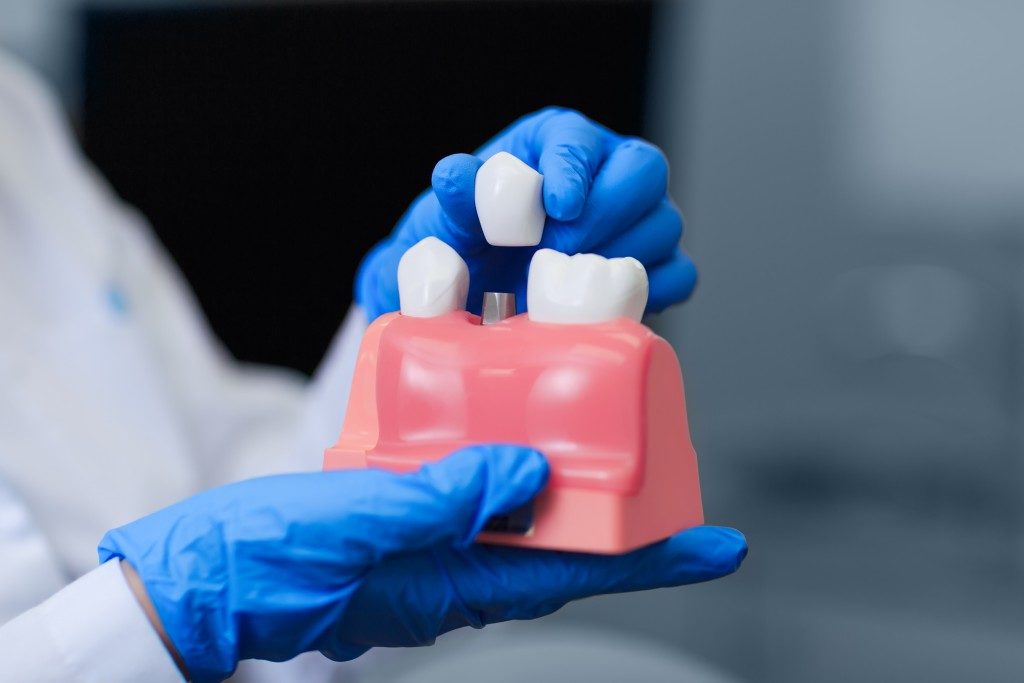Have you ever come across a person who eats lots of carbs and sugar and never gets tooth cavities? Such cases are rare, but it still shows that human bodies have different capabilities and that treatment methods for dental conditions can vary somewhat.
That is why dentists in Murray offer several types of dental implants for lost teeth. Dental implants are ideal alternatives for dentures, dental bridges, and other conventional tooth replacement options.
What Exactly is a Dental Implant?
The dental implant procedure involves the surgical insertion of a titanium post into the jawbone to serve as a tooth root. Since it is small, this insertion fits into jawbone easily. Many people will not even be able to tell it is not normal tooth roots. A few weeks after the surgical procedure, the dentist will attach a natural-looking tooth to the post to complete the tooth replacement.
What’s the Key to Choosing the Correct Implant?
 You have several options when it comes to dental implants. Your dentist will help you choose the ideal implant type based on various factors. Your dentist will examine your teeth, jaw, and gums to determine the best course of treatment. Considering that implants attach to the jawbone, the health of this part is of critical concern. Generally, most adults qualify for dental implants, as their jawbones are fully-grown.
You have several options when it comes to dental implants. Your dentist will help you choose the ideal implant type based on various factors. Your dentist will examine your teeth, jaw, and gums to determine the best course of treatment. Considering that implants attach to the jawbone, the health of this part is of critical concern. Generally, most adults qualify for dental implants, as their jawbones are fully-grown.
On the other hand, dental implants may not be suitable for smokers because they’re at greater risk of infection following surgery and may heal more slowly than others. Patients with diabetes may also have to look for a different treatment.
Please note that each case is different and suitability or otherwise is only determined after consultation with your dentist. X-rays are often performed to check your jawbone and determine your overall oral health. Your dentist will also inform you of the risks, prevailing problems, details of the procedure, and implant type options, including:
- Endosteal Implants
These implants are attached directly to the jawbone. While they work for many patients, the most important qualification is a healthy jawbone. Upon the healing of the surrounding tissue, another procedure is performed to connect the replacement tooth to the endosteal implant.
- Subperiosteal Implants
As an alternative to the first implant type, subperiosteal implants rest on the jawbone, not fixed to it. A metal frame is attached under the gum tissue and acts as the holder of the post. Once the gum heals, it holds the frame in place. Dentists then securely place the replacement tooth on the poles that protrude from the gum.
- Zygomatic Implants
While only a few dentists offer this rare type of implant, zygomatic implant it is still an option. It requires patients to have an optimally healthy body as the procedure is somewhat complicated. Also, substantial facial bone is necessary because dentists attach this implant to the cheekbone.
- Other Procedures
Sometimes, the jaw is unable to support the above implants. Dentists may perform bone grafting to make the jawbone strong enough to support the dental implant. Other procedures you may need before you can have dental implants include ridge expansion and sinus lift.
Dental implants are a lasting solution lost or missing teeth. If you are having such an issue, the dentist will perform a thorough examination and then list the options. You can always rely on expert opinion for the best dental treatment.

